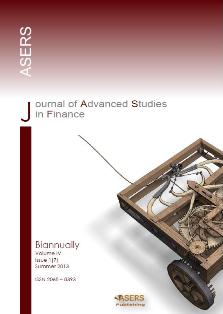LIVING WITH INTERCONNECTED BANKING SECTORS DURING THE PERIOD OF GLOBAL FINANCIAL MARKET UNCERTAINTIES: EXPERIENCES OF EAST AND SOUTHEAST ASIA
LIVING WITH INTERCONNECTED BANKING SECTORS DURING THE PERIOD OF GLOBAL FINANCIAL MARKET UNCERTAINTIES: EXPERIENCES OF EAST AND SOUTHEAST ASIA
Author(s): Reza Yamora SiregarSubject(s): Economy
Published by: ASERS Publishing
Keywords: foreign banks; interconnectedness; financial stability; branch; subsidiary; financial crisis
Summary/Abstract: The initial outbreak of the sub-prime crisis through the interconnected financial system may have occurred in early 2007, but the fragility of the global banking system has remained wide-spread in recent years. Amidst the global financial environment, the East and Southeast Asian economies have continued to attract a significant bulk of the global banks’ loans to emerging markets, albeit at a decelerating rate. The alleged advantages of these lending are well-known. Yet the recent interruption to this spectacular rise in international bank lending during the 2007-2008 global financial crisis serves as a stark reminder that international bank lending can rapidly transmit adverse shocks from developed markets to emerging economies. The objective of this study is to ascertain features of foreign banks’ activities in East and Southeast Asian economies, particularly during the post 2007 global financial crisis period, and to weigh their implications on the local economies and policy management, especially for the central banks and banking supervisors in the region.
Journal: Journal of Advanced Studies in Finance (JASF)
- Issue Year: IV/2013
- Issue No: 07
- Page Range: 32-61
- Page Count: 30
- Language: English
- Content File-PDF

